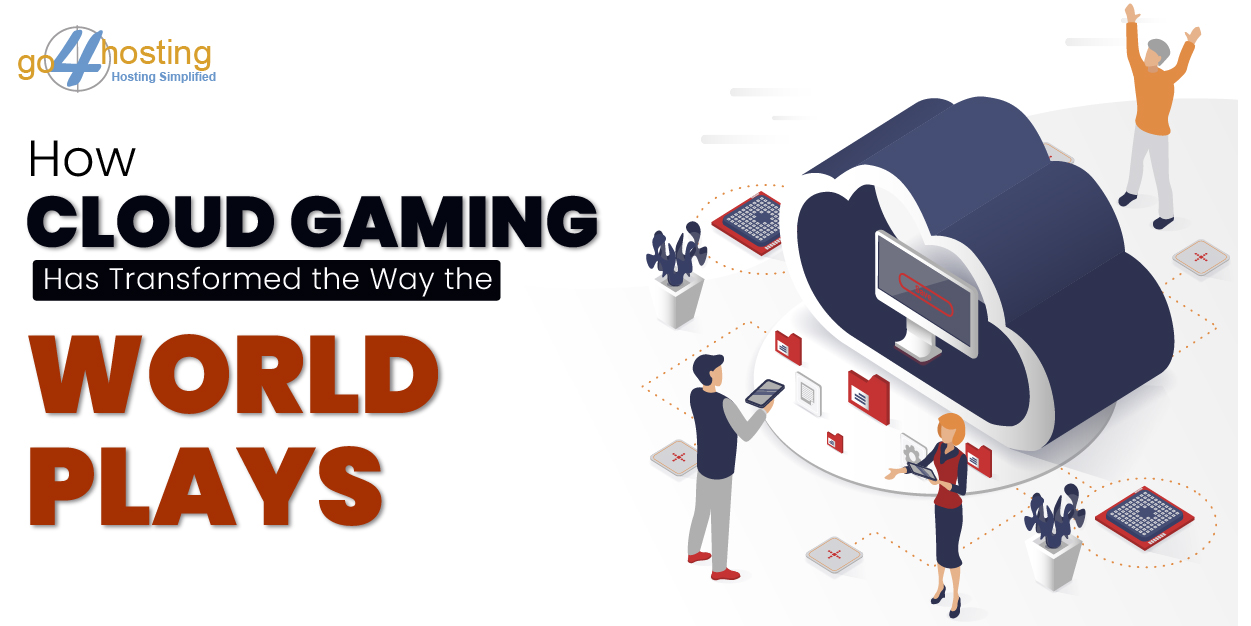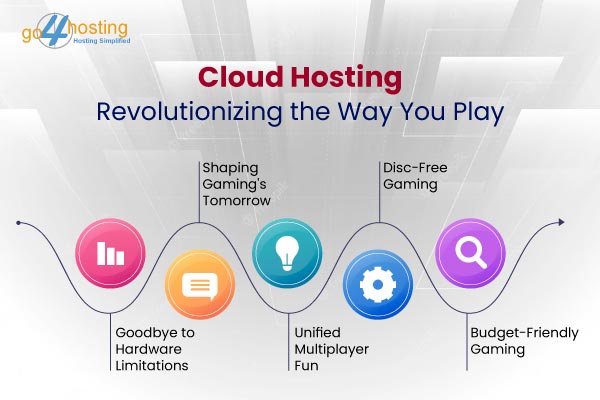How Cloud Gaming Has Transformed the Way the World Plays

Contents of Table
Video games have evolved since the early days of Space Invaders and Pongs, where pixels and beeps ruled the experience. Today, gaming is a million-dollar industry, offering players a unique experience equipped with marvel technologies. Innovations have taken this entertainment field to new heights, from multi-player and mobile games to virtual reality headsets, exceeding everyone’s expectations. Amidst these advancements, cloud gaming has emerged as a real game-changer.
Cloud gaming authorizes players to stream games from a remote server. It releases you from the shackles of conventional hardware and software dissolve, paving the way for an immersive gaming experience like never before. This transcendent technology allows avid gamers to harness the prowess of distant servers, streaming gaming marvels straight to their fingertips. It won’t be incorrect to say that cloud gaming has transformed how the world indulges in games. As per Statista’s report, the cloud gaming revenue market is expected to reach 4.34 billion dollars by the end of this year.
Read on to know what all the buzz around cloud gaming is:
What Exactly is Cloud Gaming?
Imagine a future where you don’t need a supercomputer or a high-end console to enjoy the latest and best games. It is where cloud gaming comes in. It’s like hosting your games on a remote server on powerful computers. The best part is that all the action is streamed to your gadget.
Here’s how it works
You push a button to enter. Your activities are transmitted to the cloud server over the internet. It analyzes what you did, such as killing a bad person or completing a challenge, and returns the findings nearly instantaneously to your smartphone. The entire procedure is so fast that you’d assume the game runs directly on your smartphone.
Cloud gaming provides gamers with a plethora of new options. You are not confined to a single gadget. You may start a game on your PC at home and then continue it on your phone during your lunch break.
Fun Fact: As per market research, the cloud gaming industry is expected to grow by over 300%
Evolution and History of Cloud Gaming
The history of cloud gaming is a fascinating journey that mirrors the technological advancements and shifts in the gaming industry. From humble beginnings to the forefront of gaming innovation, cloud gaming has transformed the way people play and experience their favorite video games.
Early Concepts and Experimentation (2000s)
Cloud gaming originated in the early 2000s when numerous firms began experimenting with the idea of broadcasting games over the internet. However, due to restricted internet speeds and infrastructure at the time, deploying such a service on a broad scale faced major hurdles. Due to latency and bandwidth issues, these experimental services struggled to provide smooth gameplay experiences.
OnLive: Pioneering Cloud Gaming (2010)
One of the earliest cloud gaming breakthroughs came with OnLive’s launch in 2010. OnLive introduced a revolutionary approach by rendering games on remote servers and streaming gameplay video to users’ devices. It allowed players to experience high-quality games on low-end computers and even on certain mobile devices. While OnLive showcased the potential of cloud gaming, it struggled with technical limitations and business challenges.
Growth and Diversification (2010s)
As internet speeds improved and technology advanced, the cloud gaming landscape began to diversify. Companies like Gaikai (later acquired by Sony) also entered the scene, offering similar cloud gaming services. The introduction of high-speed internet, data centers with powerful GPUs, and advancements in video compression techniques helped mitigate latency issues, making cloud gaming more viable.
NVIDIA GeForce Now and PlayStation Now (2015-2016)
NVIDIA’s GeForce Now, launched in 2015, marked another significant milestone. This effort aimed to grant customers the ability to access a collection of games they had purchased on platforms like Steam. Thus, enabling them to play these games via remote servers. In 2014 Sony also launched PlayStation Now, enabling players to stream selected PlayStation games to different devices. These platforms demonstrated the growing interest in cloud gaming and its potential to expand gaming accessibility.
Google Stadia and Microsoft xCloud (2019-2020)
The arrival of Google Stadia in 2019 and Microsoft’s xCloud (later rebranded as Xbox Cloud Gaming) in 2020 brought cloud gaming to even greater prominence. Google Stadia introduced the concept of streaming games in up to 4K resolution without requiring dedicated gaming hardware. Microsoft’s xCloud integrated cloud gaming with the Xbox Game Pass subscription service, offering subscribers a wide range of games.
Current Landscape and Future Prospects
Since its debut, the cloud gaming landscape has come a long way. Many technological hurdles that originally hampered cloud gaming have been solved by combining strong cloud servers, 5G technology, and breakthroughs in video compression. Major players in the gaming industry continue to invest in and expand their cloud gaming offerings, driving innovation and competition.
Cloud gaming’s future holds the promise of further accessibility. This approach empowers users to experience gaming of a caliber comparable to what’s found on gaming consoles, accessible across a range of devices such as smartphones, tablets, and less powerful computers. This strategic direction holds the promise of reshaping the landscape of game development. Consequently, games that demand significant computational resources and complexity could be delivered via streaming, eliminating the need for top-tier hardware.
How is Cloud Gaming Changing The Way You Play?

Have you ever envisaged a future where you could play the most recent, graphically intense games without needing a high-priced gaming rig? Cloud gaming is here to make that fantasy a reality.
- Beyond the Pixels and Hardware Limits
Remember the days of pixelated graphics and basic beeps? Those were the beginning of the gaming era. However, cloud gaming has upgraded your gaming experience. It not only moves you beyond the pixels but also prevents you from shelling out big bucks for the latest gaming console or PC hardware upgrades. The real magic takes place on remote servers rather than on your device. As a result, you can play graphically intensive games on almost any device, from your smartphone to your lightweight laptop. You hold the power.
- Redefining Game
Cloud gaming isn’t just changing how you play and shaping how games are made. Indie developers now have a global stage to showcase their creations, and established studios are conjuring up gameplay innovations that stretch the boundaries of what’s possible. Get ready to explore how cloud gaming is giving birth to a new era of gaming creativity.
- Connecting Gamers Everywhere
Gaming has always been social, but cloud gaming is turning up the volume on that camaraderie. With cloud-powered multi-player experiences and cross-platform play, you can team up with friends regardless of the devices you all have. It’s time to dive into the world of cloud-driven camaraderie that’s bringing gamers closer together.
- Evolution of Distribution Models
Remember the days of physically buying a game disc at a store? Those days are withering into the rearview mirror. With cloud gaming, you only need a stable internet connection, and voilà! You’re just a click away from gaming nirvana.
- Cost-Effective Solution
High-end gaming hardware can be expensive. Well, cloud gaming has good news for all gamers. Instead of investing in costly gaming PCs or consoles, you can subscribe to a cloud gaming service at a monthly fee-based price. The service provider will offer you access to an extensive game library. Thus, offering you affordable and effortless access to games.
Prominent Names in the Industry of Cloud Gaming
In the grand tapestry of cloud gaming, numerous players have woven a narrative of innovation, competition, and the relentless pursuit of delivering seamless gaming experiences across various devices.
Sony
Sony marked its foray into cloud gaming in 2014 by introducing “PlayStation Now.” This move was underpinned by Sony’s acquisition of Gaikai Inc., a notable player in cloud-based interactive gaming, in 2012. The acquisition set Sony on a course toward exploring cloud-based gaming solutions. Presently, PlayStation Now boasts an extensive catalog of PS4, PS3, and PS2 games, all accessible on demand. Sony enjoyed a relatively uncontested position for several years, but the landscape shifts as more participants enter the arena.
Microsoft
Microsoft entered the cloud gaming arena with strategic moves. In January 2018, the company acquired PlayFab, a comprehensive backend platform provider for creating, launching, and growing cloud-connected games. The same year witnessed the unveiling of Project xCloud, designed to provide a seamless gaming experience across all devices, mirroring the speed and high-quality visuals associated with PCs and consoles. Within a year, Microsoft initiated a public preview in the United States, the United Kingdom, and Korea. The climax came in September 2020 with the beta launch of cloud gaming for Xbox Game Pass Ultimate members in 22 markets.
Nintendo
Nintendo, renowned for its iconic character Mario, introduced a cloud-based iteration of its games for the Switch console. This innovative approach entails streaming games directly from servers, requiring a download only for launching purposes.
Amazon’s Luna and AWS Foundation
Amazon unveiled its cloud gaming service, Luna, in September 2020. Built atop the Amazon Web Services (AWS) infrastructure, Luna harnesses the capabilities of one of the most expansive cloud platforms in the industry. Subscribers can opt for the Luna+ game channel, providing access to an expanding library of games. Amazon further announced a collaboration with global video game publisher Ubisoft. Thus, offering a dedicated gaming channel accessible directly through Luna.
In March 2019, Google introduced Stadia, its innovative gaming platform that offers instant game access across various screens. The official debut of Stadia took place in November 2019, ushering in the era of 4K gaming on TVs without the need for a console. Since then, numerous enhancements and expansions have been announced, underlining Google’s commitment to pushing the envelope in cloud gaming.
NVIDIA
NVIDIA has been at the forefront of cloud gaming technological advancement. The fruits of its research and development efforts culminated in the beta launch of GeForce NOW for Mac devices in mid-2017. Subsequent milestones included the release of the GeForce NOW cloud gaming PC beta in January 2018 and its widespread availability in February 2020. Furthermore, NVIDIA collaborated with Tencent to introduce cloud-based PC gaming to the Chinese market in late 2019.
Tencent
Tencent, a significant player in the gaming industry, embarked on two cloud gaming ventures. The first, Start, underwent public testing in China in 2019, featuring renowned PC games such as Fortnite and NBA2K Online 2. Additionally, Tencent partnered with TV manufacturers to launch an official TV version of the service in December 2020. The second initiative, GameMatrix, emerged in collaboration with Huawei in 2020, targeting Android smartphones and utilizing Huawei’s Kunpeng CPUs and Intel’s Xeon GPUs. The global rollout of these services remains uncertain.
Wrapping Up
Cloud gaming is more than simply a technology advancement. It marks a seismic shift in the very nature of gaming. It has transformed the business landscape, providing gamers an infinite horizon where gaming is not limited to a certain location or time. The future is promising, with ongoing technological advancements and the collective commitment of industry giants propelling cloud gaming into exciting uncharted territories. So, whether you’re a seasoned player or new to the gaming world, the era of cloud gaming has something exceptional to offer—a boundless universe of interactive experiences waiting to be explored.





